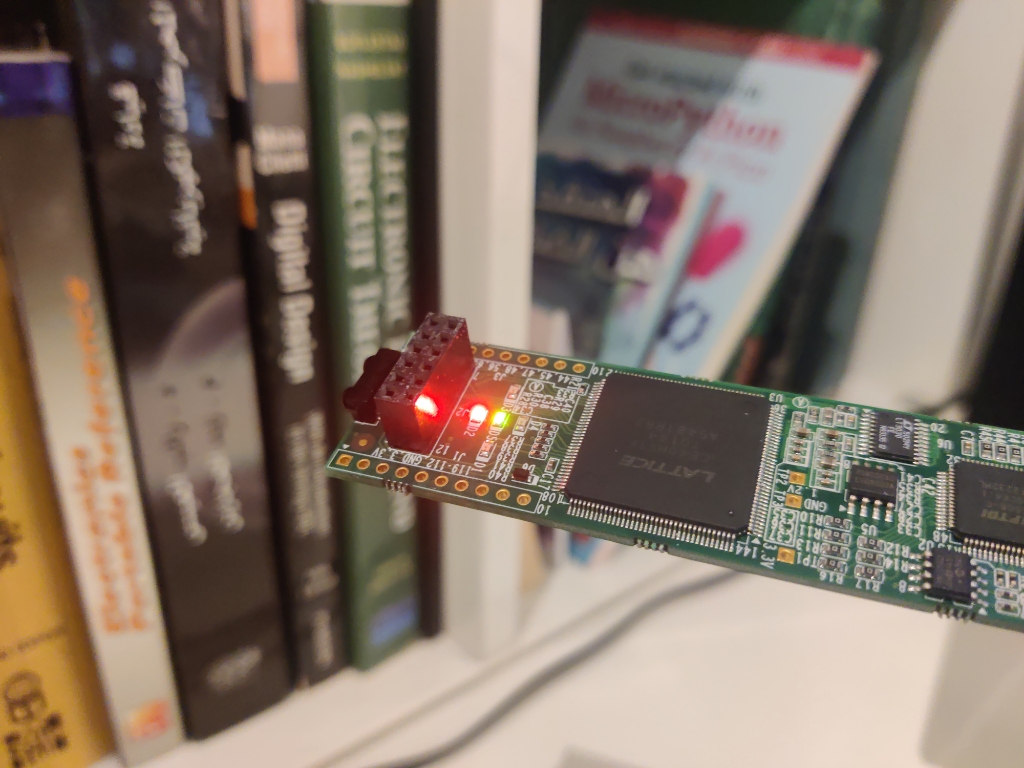ICE40 (FPGA)
Summary
This week, I explored FPGA programming using the ICE40 FPGA Stick, an open-source, low-power FPGA. Unlike microcontrollers, FPGAs require a different mindset since they are hardware configurable rather than programmed like traditional embedded systems. The learning curve was steep, and I encountered many new concepts, but I followed the DigiKey tutorial series (Video 1, Video 2) step by step. By the end of the experiment, I successfully implemented a simple LED blinking program, which was my first hands-on experience with FPGAs.
Work Process Detail

1. Understanding the ICE40 FPGA Stick
Unlike traditional MCUs (Microcontrollers), which execute sequential instructions, an FPGA (Field-Programmable Gate Array) is a hardware chip that can be reconfigured to act like different digital circuits.
Key Features of the ICE40 FPGA Stick:
✅ Open-source FPGA: Uses Lattice iCE40 FPGA family.
✅ Low-power consumption: Designed for power-efficient applications.
✅ Reconfigurable logic: Can implement digital circuits like counters, shift registers, or even CPUs.
✅ Uses Verilog or VHDL: Requires a hardware description language (HDL) instead of traditional programming.
✅ Supported by open-source tools: Uses Yosys, nextpnr, and IceStorm for synthesis and bitstream generation.
✅ USB-powered: Easy to interface and power directly from a computer.
Understanding these differences was crucial before starting development, as it required a shift in thinking from software programming to hardware design.
Learning Outcome
Working with the ICE40 FPGA Stick was a challenging but rewarding experience. Unlike microcontrollers, where code executes sequentially, FPGAs require a hardware description approach, which was completely new to me.

